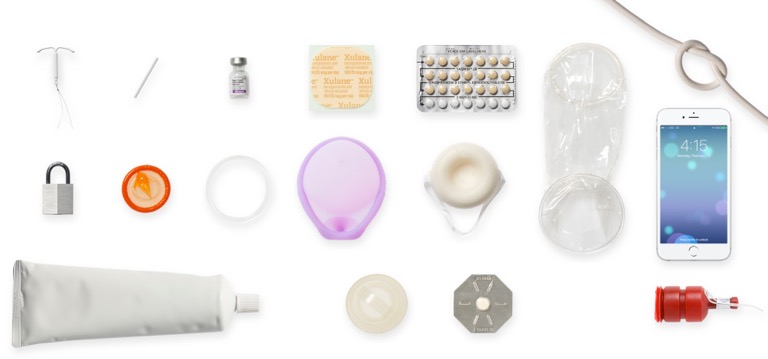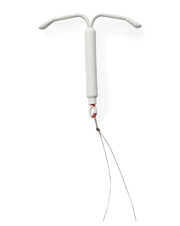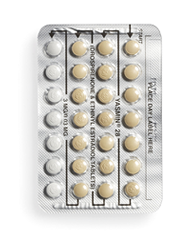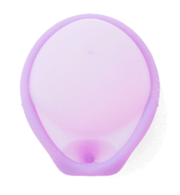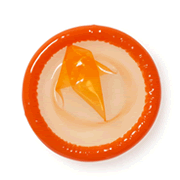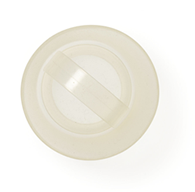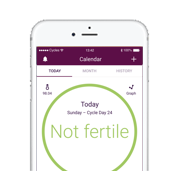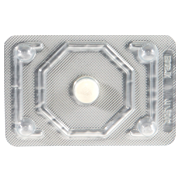Combined Hormonal versus Progestin-Only Birth Control

Hormonal birth control methods are kinda like two happy families.
Three of the most common forms of birth control—the pill, the ring, and the patch—all work the same way. They’re all considered “combined” hormonal methods, meaning they contain two kinds of hormones: estrogen and progestin. Other hormonal methods—the shot, the implant, hormonal IUDs, and the progestin-only pill (a.k.a., minipill)—contain only one kind of hormone—a progestin.
The hormones in these methods can cause side effects. Some side effects might be easier to deal with than others, so when choosing a method, talk to a provider at your nearest The Right Time health center about what you should expect. In the meantime, here are the most common side effects people experience on combined hormonal methods and progestin-only methods.
Periods and spotting
If you have very heavy periods (menorrhagia), very painful periods (dysmenorrhea), or irregular periods, both families of methods can help. All hormonal birth control methods can potentially make periods lighter, less painful, more predictable, or stop entirely. The details depend on the method.
Combined: Using combined hormonal methods means you can have a period each month. From a biological perspective, it’s not truly a period, but it feels like one. You can also use the pill and the ring without any breaks to skip periods, although this can cause unexpected spotting.
Progestin-only: Progestin-only methods have a less predictable impact on bleeding. Usually they cause lighter bleeding overall, but they can also cause spotting—though that often decreases over time (within 3 to 6 months in many cases). For some people who use progestin-only methods, periods stop altogether—the likelihood of this depends on the method. Concerns about changes in bleeding are among the most common reasons people stop using progestin-only birth control, so if you’re considering a progestin-only method, make sure to ask your health care provider a ton of questions so you’ll know what to expect.
Weight gain
With thousands of women taking these methods of birth control in hundreds of studies over the years, scientists have seen no consistent relationship between most types of hormonal birth control and weight gain. That means some women gain weight, some women lose weight, and some women stay the same weight. It doesn’t mean you should stick with a method if you think it’s affecting your weight in a bad way—at the end of the day only you can say how a method is affecting your body.
The exception is the shot. There is evidence that the shot is associated with weight gain for some women. But the rest of the progestin-only family doesn’t share this trait: there is no consistent pattern of weight changes among women taking other progestin-only methods.
Headaches and migraines
Combined: Combined hormonal methods may make menstrual migraines more common, especially when taking the sugar pills. Using the pill or the ring without breaks makes this type of headache less likely.
A special note if you have migraines with certain visual effects (aura): your health care provider should help you steer clear of combined hormonal contraceptives. You can safely use any of the progestin-only methods.
Progestin-only: Research hasn’t shown any consistent link between progestin-only methods and headaches.
Acne
Combined: Combined hormonal methods often reduce acne. The strongest evidence of this is for the pill. Beware that when you first start using a combined hormonal method, you may have a flare of acne. After a few months, it calms down and your skin is likely to be clearer than before.
Progestin-only: Progestin-only methods have a mixed relationship with acne—it may get worse, better, or stay the same.
Libido
Lots of things can impact libido. Both families of hormonal birth control cause changes in the body’s hormones that could potentially affect it. Some people find that not worrying about an accidental pregnancy is a big turn on. If you think your method is affecting your libido in a bad way, try switching to a different method for a few months. If that doesn’t seem to help, try switching families or going hormone-free.
All the rest
Some people taking combined hormonal contraceptives experience a range of other side effects, including breast tenderness, mood changes, nausea, and bloating. Switching to a progestin-only method may make these side effects less intense or make them go away all together. If that doesn’t help, then there’s another family of birth control that may come to the rescue: ones that have no hormones at all, such as condoms and diaphragms. In the end, you know your body best, so if you don’t like the way your birth control method is making you feel, try a different one.
Updated November 2020
Related Content

Article
Birth Control & Your Period: What to ExpectBirth control often changes your period, and that’s normal and safe.

Article
Handling the “When Are You Having Kids?” Question Around the HolidaysRemember: your timeline is yours.

Article
What Should I Do After I Get Diagnosed with an STI?Getting an STI doesn’t change who you are.

Article
How Can I Take Care of My Breast Health?Keeping up with routine preventative health visits can help catch any changes early.


